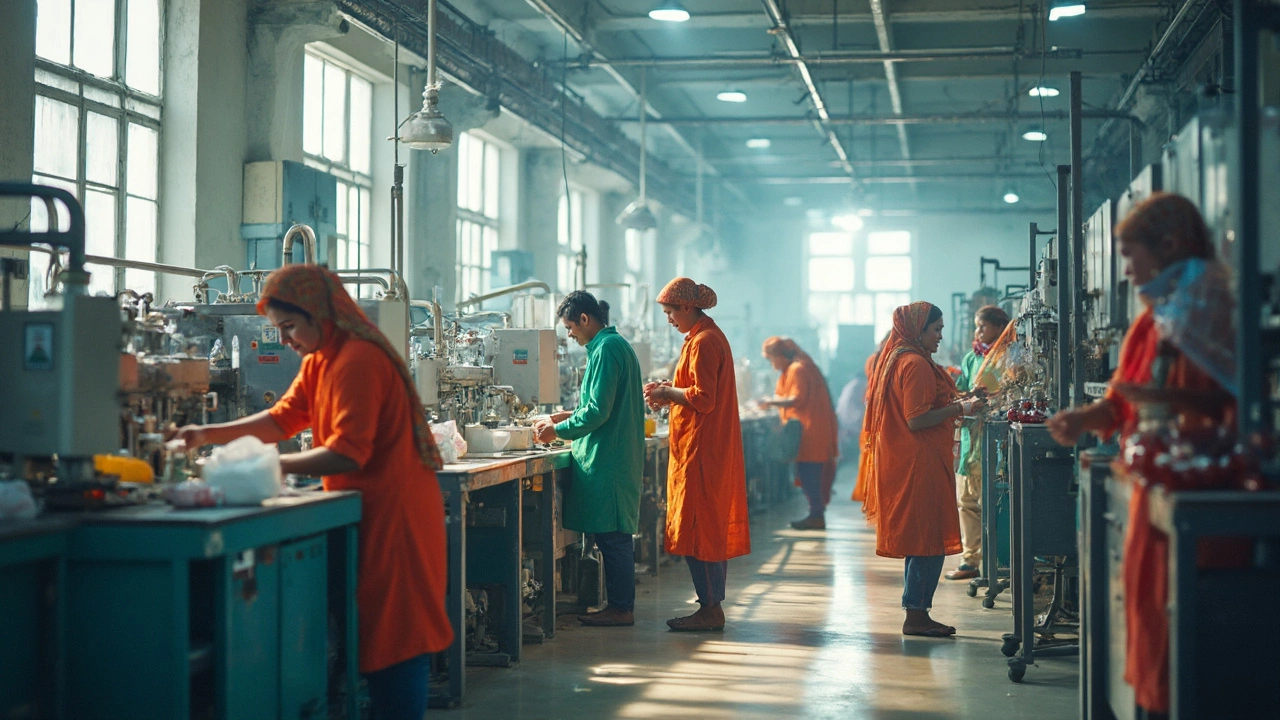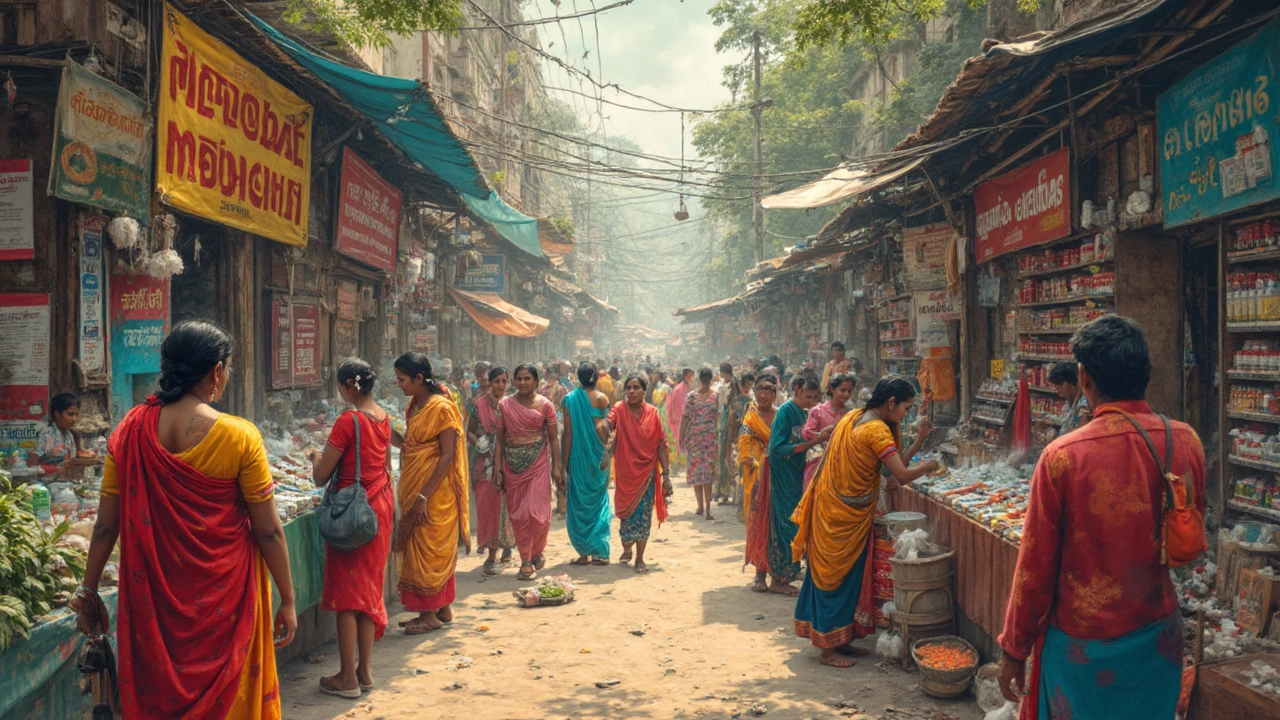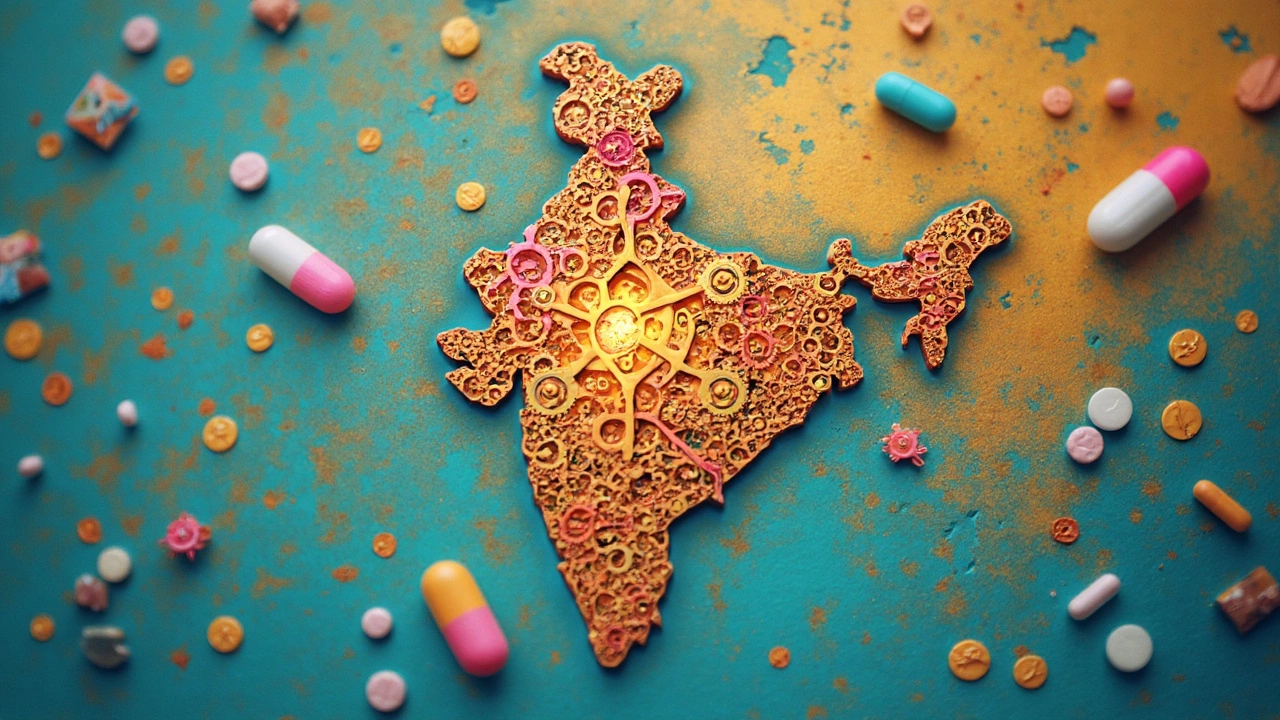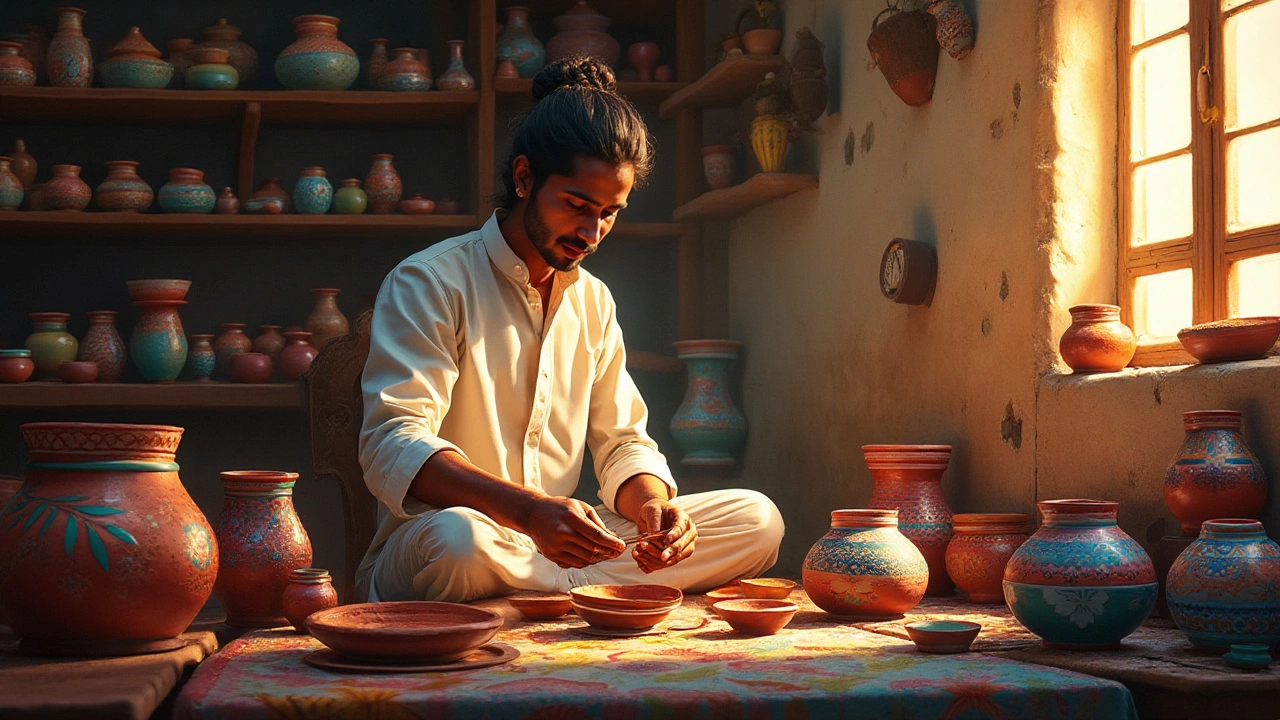Why Are Drugs Cheaper in India? Unpacking the Cost Difference

Ever wondered why medications in India won't break the bank like they might elsewhere? It's not just a fluke; there's a method behind the madness. India's pharmaceutical scene is pretty unique thanks to a blend of local manufacturing and competition, all wrapped in a web of government policies.
To kick things off, India is home to a massive number of drug manufacturers. We're talking thousands of them cranking out generic drugs like there's no tomorrow. This local production means lower costs, as there's no need to import expensive brand-name drugs.
But wait, there's more to it. There's a whole bunch of government regulations in place to keep drug prices in check. The authorities constantly monitor and control pricing, ensuring affordable meds for the masses. It’s all about keeping those profit-hungry price hikes at bay.
- Introduction to Drug Pricing in India
- Role of Local Manufacturing
- Impact of Government Regulations
- Competitive Market Dynamics
- Challenges and Future Outlook
Introduction to Drug Pricing in India
So why exactly are drugs cheaper in India? There's a cocktail of reasons that all mix together to make this happen. First up, India's pharma industry is one of the biggest in the world, pumping out almost half of the global demand for vaccines and a good chunk of the medicines for countries all over.
One of the major reasons drugs are cheaper here is due to the hefty production of generic medicines. Unlike the high-cost brand-name drugs, generics are those unsung heroes that come with the same composition but without the flashy branding. India leads the global markets in producing these, driving down costs significantly.
Pharma manufacturers in India benefit from a huge pool of skilled professionals who work at lower labor costs compared to their Western counterparts. This economic advantage trickles down, resulting in affordable drug prices.
Looking at the Competitive Edge
India's market is intensely competitive. Picture a bustling bazaar where dozens of players are all vying to sell you the same thing. This competition helps keep prices in check. With hundreds of licensed manufacturers, there's always someone ready to undercut the other guy by a rupee or two. More competition equals better prices for everyone.
Supporting Role of Government Policies
The Indian government keeps a vigilant eye on drug prices through regulations like the Drug Prices Control Order (DPCO). This prevents exorbitant pricing of essential meds, ensuring they remain accessible for the population.
To give you an idea of scale, here's a quick snapshot:
| Category | Global Share (%) |
|---|---|
| Generic Drugs | 20 |
| Vaccines | 50 |
Understanding these pieces of the puzzle gives a clear picture of why India remains a magnet for affordable medicines. It’s not just about cheap drugs. It’s a well-oiled machine that brings value to the table, ensuring people across the globe can access essential medicines without having to break the bank.
Role of Local Manufacturing
India's prowess in local manufacturing is a game-changer for keeping drug prices low. Ever noticed how buying locally made items often slashes the price tag? It's the same with drugs. By making their own medicines, Indian manufacturers bypass the hefty costs tied to importing pricey brand-name pills.
Manufacturing Scale and Capacity
India boasts over 3,000 pharmaceutical companies and more than 10,500 manufacturing units. This massive network cranks out both generic and branded drugs that are shipped all around the globe. In fact, India supplies about 20% of the world's generic drug market. That's a whole lot of pills being made without extravagant shipping costs weighing them down.
Cost Efficiency and Innovation
Here's a cool fact: Indian manufacturers excel in producing cost-effective drugs without skimping on quality. They use innovative processes to keep manufacturing smooth and cheap. When you ramp up production to such a large scale, each pill costs a whole lot less to make. And guess who benefits? The consumer, paying less without compromising on quality.
Government's Support for Manufacturing
The Indian government isn't just a spectator in this game. With initiatives and incentives, they boost local manufacturing like there's no tomorrow. Tax breaks, simplified regulations, and dedicated manufacturing zones are all in play, encouraging growth and investment.
By fostering a fertile ground for pharma manufacturers India, authorities ensure a continuous supply of affordable medicines for the population. All these elements lining up mean that drugs cheaper in India aren't just a lucky coincidence but a well-tuned strategy.
| Aspect | Details |
|---|---|
| Manufacturing Units | Over 10,500 |
| Contribution to Global Generics | 20% |
| Pharmaceutical Companies | More than 3,000 |

Impact of Government Regulations
Government regulations in India are like the unsung heroes keeping drug prices reasonable. They play a massive role, especially in ensuring medicines remain affordable for everyone. But how exactly do these regulations work?
The Price Control Regime
The Indian government actively imposes price controls on essential medicines. The National Pharmaceutical Pricing Authority (NPPA) is the central player here, with the mandate to regulate drug prices and ensure no extreme hikes occur. Under the Drugs (Prices Control) Order (DPCO), a list of essential medicines is kept under a price cap, meaning companies can't charge over a certain amount for these.
Encouraging Generic Drugs
India loves its generic drugs, and for a good reason. They're cheaper but just as effective as brand-name drugs. The government actively promotes the production and use of generics by ensuring less stringent patent laws compared to Western countries. This means more players in the market can produce the same drugs, ensuring competition and pushing prices down.
Support for Local Manufacturing
Another factor crucial in keeping drugs cheaper in India is the support for local production facilities. The government's Make in India initiative, for example, aims to boost local manufacturing capacity by providing incentives and simplified regulatory processes. This local focus reduces reliance on expensive imports.
These regulatory measures don't just aim to make medications affordable; they also strive for self-sufficiency and a robust domestic pharmaceutical industry. The result? It limits dependency on big pharma from abroad and keeps Indian pharmaceutical markets thriving.
Competitive Market Dynamics
One of the reasons drugs are cheaper in India is the highly competitive market landscape. Loads of companies, from big names to small players, are battling it out, which naturally keeps prices from skyrocketing. With thousands of pharma manufacturers pushing both generic and brand-name drugs, competition is fierce.
A significant factor in this competitive environment is India's large generic drug industry. Generic medicines, which are chemically identical to their brand-name counterparts but produced and sold at a lower price, are a vital part of India's pharmaceutical sector. This allows consumers to benefit from effective treatments without burning a hole in their pockets.
Local Heroes and Global Players
Another reason is the presence of both local and international companies. Indian manufacturers are known for being resourceful, keeping their production costs low, and passing those savings on to the consumers. Pharma manufacturers in India often work with economies of scale, meaning they produce large quantities to reduce costs. And with the global players also setting up shop in India, the market is bustling.
"The intense competition among Indian pharmaceutical companies has truly been a game changer in making medicine affordable."—Dr. Ranjit Dalvi, Health Economist
Regulatory Influence
The government plays a role, too, regulating how these companies operate and ensuring fair play. This prevention of monopoly practices spreads the wealth across companies and leads to even lower prices. It’s pretty much like seeing a supermarket price war but with life-saving drugs.
Statistics Speak
To illustrate, consider this simple table showing the market share distribution among the top 4 Indian pharmaceutical companies:
| Company | Market Share (%) |
|---|---|
| Sun Pharma | 8.6 |
| Cipla | 5.4 |
| Dr. Reddy’s | 4.5 |
| Aurobindo Pharma | 3.9 |
Such a diverse spread highlights the competitive environment that keeps comfortingly low prices on the shelf, benefiting anyone looking for drugs cheaper in India.

Challenges and Future Outlook
Despite India's success in keeping drug prices low, the competitive market dynamics and reliance on local manufacturing bring their share of challenges. As the global landscape shifts, India must navigate these issues to maintain its edge.
Regulatory Hurdles
The world of pharma isn't without its red tape. With ever-evolving standards for drug safety and efficacy, Indian companies must constantly innovate to keep up. This can lead to increased costs, which might trickle down to consumers.
"Adapting to international regulatory standards doesn't just expand market reach; it ensures every medication is as safe and effective as the last," says Dr. Meena Parikh, a regulatory affairs expert.
Intellectual Property Rights
Then there's the tussle over intellectual property rights. Some argue that India's policies can sometimes clash with international patent laws, causing friction on the global stage. Striking a balance can be tricky but necessary to foster trust across borders.
Future Innovations
But let's not forget the potential positives. The Indian pharmaceutical sector is gearing up for innovation—more focus on research and development to create homegrown drugs that can stand up tall in overseas markets. This not only boosts credibility but also opens new revenue streams.
On the horizon, we might even see revolutionary breakthroughs in drug formulations, making Indian solutions more potent and far-reaching. Emerging markets are ripe for collaboration, allowing for a mutual exchange of technology and expertise.
Ultimately, while challenges exist, the Indian pharma scene holds its course with an eye on both opportunity and reinvention.





